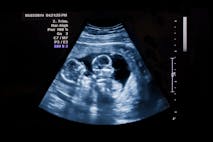
Study: Nearly half of women suffer moderate to high distress after abortion
Michael J. New
·
CNN Health pushes fiction that medical students desperately need ‘lifesaving’ abortion training
CNN Health is promoting the false claim that, because of pro-life laws, medical students have to turn to extreme means to learn how to carry out “lifesaving” medical procedures, adding that abortion training has been “severely limited” in pro-life states. It’s an inaccurate claim that’s been added to the barrage of misinformation spread by news outlets in the post-Roe environment.
CNN tagged along to a hotel conference room in Philadephia to observe a training session in which medical students were taught how to carry out manual vacuum aspiration (MVA) procedures using papayas. The MVA procedure can be used in the early weeks of pregnancy for several things: to treat a miscarriage, to take a sample of the uterine lining for testing, and also for elective abortions.
CNN Producer Alexandra King said 18 students, who all appeared to be female, were participating in the training and had flown in from pro-life states.
Hands-on training myths
The students complained to CNN that they aren’t receiving “hands-on” abortion training at their medical schools; Complex Family Planning Specialist Dr. Alhambra Frarey claimed medical students are being cheated, and women are put in danger because of this. “People may need an abortion because they’re facing a life-threatening pregnancy complication,” she claimed. “If you don’t know how to do it under routine circumstances, you certainly don’t know how to do it when somebody’s life is on the line.”
However, not every medical school provides hands-on training in medical procedures. The first two years usually involve preclinical training in which potential future doctors learn about basic medical concepts, according to the Association of American Medical Colleges (AAMC). It isn’t typically until they move on to the clinical portion of training in the last two years of their medical education that they begin clinical rotations, where they receive hands-on experience in medical care.
However, notes AAMC, “The curriculum varies for each medical school, and some medical schools have a more integrated, multidisciplinary program and begin clinical training and patient interaction during the first week.” So what a med student learns and when he or she learns it can depend on their school of choice — for every type of medical care.
In addition, clinical training might include the use of MVA, but it is used less frequently than the D&C procedure. Hands-on clinical training is more likely to include the use of D&C procedures when necessary — to treat miscarriage, or to assist a woman experiencing an incomplete abortion and a potential resulting infection.
Just as a student wouldn’t learn hands-on training with a patient suffering from cardiac arrest, a trauma patient, or a woman in labor until in-clinic training, she wouldn’t learn how to handle a pregnancy complication or miscarriage until presented with those cases during that clinical training.
Required residency training
Once in residency, there are procedures that medical students are required to learn. Those procedures include treating miscarriage and pregnancy loss using “uterine evacuation,” which Board-certified OB/GYN Dr. Susan Bane confirmed to Live Action News, would include a D&C or a D&E procedure.
The requirements from the Accreditation Council for Graduate Medical Education, the body responsible for accrediting all graduate medical training programs for physicians in the United States, (found here) state, “Residents must have didactic activities and clinical experience in the comprehensive management of spontaneous abortion [miscarriage] and pregnancy loss [stillbirth], including patient education, expectant management, medication management, uterine evacuation, complication management, and postpregnancy loss care.”
Learning to carry out an evacutation of the uterus is a required part of training and a residency program would not be in compliance with the accrediation council if it failed to provide that training to its students.
No procedures are illegal unless used to intentionally kill
The MVA and D&C procedures are not banned in any state and are still being taught in pro-life states when deemed necessary for patient care — they just aren’t using them to actively kill babies. The media really must stop acting as if no one knows the difference between removing the remains of an already deceased child who died by natural miscarriage, and removing a still-living child by intentionally killing him.
Article continues below
Dear Reader,
In 2026, Live Action is heading straight where the battle is fiercest: college campuses.
We have a bold initiative to establish 100 Live Action campus chapters within the next year, and your partnership will make it a success!
Your support today will help train and equip young leaders, bring Live Action’s educational content into academic environments, host on-campus events and debates, and empower students to challenge the pro-abortion status quo with truth and compassion.
Invest in pro-life grassroots outreach and cultural formation with your TRIPLED year-end gift!
In addition, during a medical emergency, the standard of care for a woman with a living baby does not include induced abortion. Induced feticide by abortion is not necessary for preterm premature rupture of membranes (PPROM), anemia, ectopic pregnancy, elevated blood pressure, HELLP syndrome, molar pregnancy, or other diagnoses in pregnancy. It is not the standard of care in any of these situations.
Pro-life faculty at medical schools have stated that pro-life laws do not affect the training of future doctors in true medical care. Dean Prentice of the College of Health Sciences at Oral Roberts University told AAC&U that pro-life laws will not change medical education in the United States or how future doctors are trained. He explained, ‘[T]hese are medical procedures — like any other medical procedure…” The difference, of course, is that they must not be used to intentionally kill human beings.
Dr. Bane confirmed this with Live Action News. “There is no reason that students/residents can’t receive training in D&C procedures,” she said. “They are not banned in any states! I trained in D&Cs for miscarriage management and did not do a single induced abortion while learning to do this.”
She added, “It is a very common procedure for OB/Gyns to use. The intention of the procedure is what the laws that regulate abortion impact. You can perform a D&C in all 50 states, you just can’t use them for induced abortion [intenionally killing the preborn baby] in all 50 states.”
Hands-on training with an MVA or D&C would come once a medical student entered her clinical training, learning hands-on from doctors how to handle miscarriage care and pregnancy emergencies. In these cases, an MVA or D&C is not an induced abortion and is not prohibited by any state law. What pro-life states will not allow is performing these procedures for the purpose of elective abortions (intentional killing), which are never necessary.
In fact, NPR essentially admitted this. “After medical school students graduate as physicians in the U.S., they typically apply for residency programs specific to their specialty. Those who wish to provide abortions tend to pursue residencies in obstetrics and gynecology, or OBGYN, and family medicine,” it said (emphasis added).
If there’s a decline in medical students applying to medical schools in pro-life states, as NPR claims, it could be due to media reports such as these, which are falsely presenting abortion as needed health care.
For example, CNN’s King spoke with Pamela Merritt, executive director of Medical Students for Choice, who played out a doomsday scenario. “We are dealing with a crisis that can get worse,” claimed Merritt. “It’s realistic that we might see a point where hospitals in ban states don’t have people who know how to handle catastrophic pregnancy outcomes.”
It’s unclear what she means by “catastrophic pregnancy outcomes” — which, for abortion enthusiasts, could mean anything from a baby allowed to be born with a health condition, to a woman giving birth prematurely due to a medical emergency that results in the baby’s unavoidable early death. Or it could just mean a woman having a baby she hadn’t “planned.”
Future doctors are being fear-mongered into believing they have to know how to kill preborn babies. But killing a baby is not how any doctor should “handle” medical emergencies or prenatal diagnosis — if that’s indeed what Merritt means by “catastrophic pregnancy outcomes.”
But even in those instances, MVA would not be the procedure used. It is approved for use up to 10 weeks, which is before most medical emergencies take place during pregnancy. Medical emergencies or pregnancy complications can occur at any point, but most don’t occur until at least the second trimester. In those cases, an MVA would be impossible to use. The baby would need to be delivered (and would. not need to be intentionally killed first).
Medical training is not “severely limited” in pro-life states as CNN claims. Rather, pro-life medical students, at risk of being pushed out of the industry by pro-abortion laws that force them to participate in abortions as a woman’s “right,” will now have more options for medical school.
According to AACU, more pro-life medical training options are opening up for students, like the plans to start a medical school at Benedictine College in Kansas. In addition, these students will graduate with more options of where to care for patients — and where they won’t be forced to partake in the intentional killing of innocent humans by abortion.
Editor’s Note 10/21/24: This article was updated with further information.
Live Action News is pro-life news and commentary from a pro-life perspective.
Contact editor@liveaction.org for questions, corrections, or if you are seeking permission to reprint any Live Action News content.
Guest Articles: To submit a guest article to Live Action News, email editor@liveaction.org with an attached Word document of 800-1000 words. Please also attach any photos relevant to your submission if applicable. If your submission is accepted for publication, you will be notified within three weeks. Guest articles are not compensated (see our Open License Agreement). Thank you for your interest in Live Action News!

Michael J. New
·
Analysis
Cassy Cooke
·
Analysis
Cassy Cooke
·
Analysis
Bridget Sielicki
·
Analysis
Cassy Cooke
·
Analysis
Cassy Cooke
·
Issues
Nancy Flanders
·
Activism
Nancy Flanders
·
Issues
Nancy Flanders
·
Politics
Nancy Flanders
·
Human Interest
Nancy Flanders
·